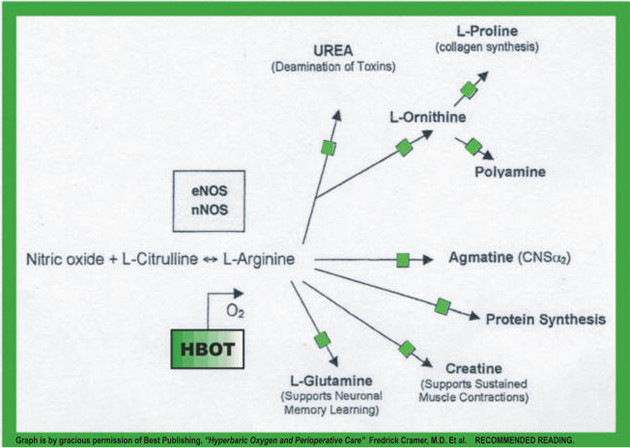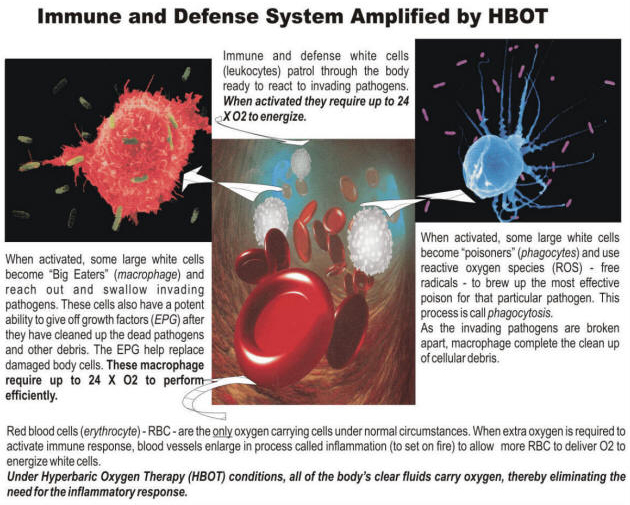If you have a Lyme Disease positive diagnosis, know that it is probable that you also have co-infections from the same tick that bit you. There never has been a more important moment to concentrate (if you can – Lyme patients are allowed mental cloudiness) or have your primary care-giver drill down into cellular science and understand the diagnosis and defy the prognosis.
A lot of Lyme www-chat rooms make loud claims about some of the tick bite co-infections to Lyme Disease (Borrelia bugdorferi aka “Bb” ) as “loving oxygen”. Simply put, these claims are based on half-truths (the worst sort) – shallow science at best and conclusions that are not only incorrect, but would make any Lyme patient hesitant to make use of hyperbaric oxygen therapy as part of their overall treatment and recovery plan.
If you have a Lyme disease positive diagnosis, know that it is probable that you also have co-infections from the same tick that bit you. There never has been a more important moment to concentrate (if you can – Lyme patients are allowed mental cloudiness) or have your primary care-giver drill down into cellular science and understand the diagnosis and defy the prognosis.
“45–70% of Bb patients have mycoplasma fermentens incognitus, 10–35% of Bb patients have Erlichia, 25–45% of Bb patients have bartonella, 8–20% of Bb patients have babesia.” – Professor Garth Nicholson, 2007.
This page should be considered a lay-person’s primer, since your recovery and return to a normal life is in your own hands. Always remember that the pit of loneliness and depression induced by a chronic illness such as Bb is your pit. There are likely to be other little villains in that pit also, adding to your misery. It will take effort on your part to beat back these invaders in your body and find you way back to health. Understanding the invaders is important to arriving at a strategy to defeat them or better said “I am cured.”
Understand the diagnosis, defy the prognosis.
The pathophysiology (the study of biological manifestations of disease and disturbance of health) of tick-bite co-infections to Bb
Most of these are bacterial infections (Bartonella, Tulermeia, Erlichia) while some are a protozoan (Babesia) with many variations of each. Most of them are Gram-negative, meaning that their cell walls do not pick up the crystal-violet color during the Gram staining process used to identify them. To throw in a wild-card into this mix is another bacterium that does not have cell walls, the mycoplasma family. So we need to give them the basket-name of gram-negative pathogens. All of these have many things in common. Apart from overlapping symptoms, is the fact that the cell walls of these pathogens cause a cascade of inflammatory response in the human body. Hold that thought, we will come back to it shortly.
Almost all of these gram-negative pathogens are facultative in that they do find that an abundant supply of oxygen is their preference, but when there is a lack of oxygen, they have other ways of producing energy, usually by a fermentation process. As you will see, it would be easy to believe that “they love oxygen” therefore hyperbaric oxygen should be avoided until the gang of invaders are banished one by one with the silver-bullets of modern pharmacology, namely antibiotics.
Pathogens have to “invade”” a human to do their damage. However there are barriers to entry, such a healthy skin, mucosa lining and robust lungs. All with their own specific security forces collectively known as the “immune system” to fight hard when these barriers are breached thus, healthy young adults shrug off pathogens faster than small infants and elderly folk. However, in the instance of an infectious tick bite, young and old are vulnerable. This is because the Lyme spirochete and any other pathogens in the ticks’ saliva will mostly start their invasion by entering the different cells that make up our blood. A particular favorite is the red-blood cell (erythrocyte) or “RBC.” Not because the pathogens “love oxygen” but because red blood cells are such a rapid ride throughout the body – about every 20 seconds.While in the RBC, many of these pathogens consume the heme iron molecules, and excrete toxins known as exotoxins, destroying cells and disrupting cellular metabolisms. Then, at the end of their life-cycle or when they are being poisoned off with either antibiotics or the free-radicals produced by hyperbaric oxygen therapy (HBOT), they exude endotoxin.
Endotoxin … a fearsome word
Endotoxin is cause of the Jarisch-Herxheimer (Herx) response. There are many dead pathogens lysing (disintegrating) and much poisonous trash to be disposed of. The kidneys and liver are overwhelmed and fever, chills, and muscle pain can occur. In essence, no matter what approach you have on your road to cure, there will be some discomfort. Hold that thought until you read the bottom portion of this page, because your health professional can add things to the interdisciplinary approach needed to get rid of these tick-borne pathogens …
Conventional Western Medicine likes to get the lab’ work, identify the pathogens, line them up and pick them off, one by one using the Silver Bullets of pharmacology.
‘Silver Bullets’ to eradicate Bb pathogenic co-infections
Most of the gram-negative pathogens can be eradicated with modern pharmaceuticals and also Hyperbaric Oxygen Therapy (HBOT). But there is always a cost to the body – anything toxic has the potential of a wider ranging toxicity on the entire body, not only the pathogen. Some examples:
BABESIA (similar to and often confused with and misdiagnosed as Malaria) is treated with the antibiotic (Abx) Arithromycin plus quinine. Side effects can include – rash, itchy skin, mental coldness, being dizzy, painful joints, diarrhea and oral and vaginal fungus. Because this Abx has such side effects, the preferred treatment for this parasite is atovaquone, marketed under the trade-name of Malarone. Special attention must be given to small adults and children when this drug is administered.
BARTONELLA (many variations) is an opportunistic infection and is often treated with the broad spectrum tetracycline Abx which has few side effects. Patients with liver or kidney problems should make their history known to their prescribing physician. However, addition of specific nutrients can counteract detrimental effects of this pathogen.
LYME DISEASE (early stages) is usually treated with doxycycline, an Abx that has few negative side effects. Dispensed for oral use, its trade-name is Vibramycin. It works well, killing with both gram negative bacteria as well as protozoa, such as malaria and other Lyme co-infections. Since this Abx is usually a 21-day program, physicians will often resort to pacing other cocktails of Abx in an effort to eliminate Bb.
Ciproflaxacin is often prescribed by physicians that claim to be “Lyme literate doctors” (LLD) and many Lyme patients that come to our centers have a central catheter or PICC line to allow for daily injections of this Abx. However, there are often serious and quality-of-life and even life-threatening adverse effects in the prolonged use of this Abx. These include irreversible peripheral neuropathy, tendonitis, muscle wasting, liver failure and hepatitis, photosensitivity and corneal perforation, general weakness, bone marrow depression, psychotic reactions and confused states – to name just a few. Currently, a number of lawsuits are underway against the many manufacturers of this family of Abx.
Tigercycline is the Abx. (brand name Tigacil) is the BIG hope for all Bb patients. Originally developed to fight methicillin-resistant Stapholococcus aureus (MRSA), it is bacteriostatic for both gram-positive and gram-negative bacteria. In 2008 studies at the Division of Infectious Diseases, Department of Medicine at Stony Brook University, New York, researchers found this Abx to be “16 – to – 1999 fold more active than doxycycline at immobilizing Bb isolates.” A word of caution is that these were in vitro (in a dish) and as yet, no in vivo (in an alive body) reports (studies or anecdotal evidence) is yet available. A good example of in vivo results is that it is known that the HIV virus is quickly killed with bleach in the dish but any HIV patient would not do well being injected with bleach. Side effects: Patients can expect mild nausea, vomiting and diarrhea, pain at the infusion site, alterations in heartbeat plus the potential of additional infections in the first couple of days of the BID one hour infusion process.
However, Lyme patients need “shotgun” multi-disciplinary (holistic) approach since many of the symptomolgy (side effects) of their Abx actually mimic the real signs and symptoms of Lyme and its tick-borne co-infections. Thus, the overlays of misdiagnosis of specialist after specialist. All Lyme patients should remain under the care of a licensed health professional since life-threatening events have been reported (patients being transported to urgent care) during the “cure” process.
Hyperbaric Oxygen Therapy (HBOT) is often included since it has its own bactericidal effect and acts synergistically with most antibiotics, allowing the prescribing physician to reduce Abx levels while achieving better results. HBOT IS a standard allopathic Western Medicine drug and it also has side effects.
A “show me the science” comment on “toxicity” from consecutive daily treatments comes from Stephen Thom, MD, PhD, Professor of Emergency Medicine at the University of Pennsylvania School of Medicine:
“Aural barotrauma occurs in a small number of patients, and rare occurrences of biochemical O2 toxicity to eyes, lungs, and the central nervous system are virtually always reversible.”
Professor Thom is the lead author in “Stem cell mobilization by hyperbaric oxygen” – American Journal of Physiology-Heart and Circulation Physiology, 290:1378-1386, 2006. First published Nov 18, 2005; Research funded by the National Institute of Health.
We recommend that you carefully review the information on the link, Oxygen Toxicity.
Good news
Hyperbaric oxygen therapy (HBOT) produces large amounts of Reactive Oxygen Species (ROS)* which are used by the body to brew "poison" to kill invaders. This included aerobic and anaerobic bugs. It works this way ...
With the additional meltdown of oxygen (Henry’s Law) into the body via the lungs, the increase of molecular oxygen energizes the immune system. White cells (leukocytes) are now in a state of arousal and gather around invaders. Some of these white cells change into macrophage ("big-eaters") and some morph into phagocytes. The latter brew "poisons" specific to the invading pathogen and act like stinging jellyfish. Where do they get their "poison"? – from increased ROS of HBOT!In essence, HBOT induces enough nasty free radicals to poison and then consume the dead bodies of the pathogens. Then, since human cells produce appropriate amounts of superoxide dismutase (SOD), after each treatment, a cascade of SOD happens within all body cells and the excess amounts of free radicals are swept away naturally.
Unlike some of the unhappy side effects of Abx, any side effects of oxygen toxicity are reversible and transient. In addition, since HBOT is known to make cell walls (both human and pathogen) more permeable, HBOT acts synergistically with Abx and the physician is able to reduce the daily dosing requirements of their Rx. to obtain the same result as Abx alone.
GOOD NEWS ... Almost all gram-negative protozoa and bacteria do not possess their own supply of superoxide dismutase. What does this mean? SOD is an enzyme that turns ROS – also known as free radicals – back into oxygen or its chemical components within the body.
For more information on Reactive Oxygen Species, see:
FreeRadicals_and_ReactiveOxygenSpecies.pdf
GREAT NEWS ... the human immune system has the shotgun ability to cope with multiple sub-clinical infections. All that is needed is an exogenous source of energy, best called "God’s Gunpowder" – OXYGEN. All of the body’s defense and repair systems are oxygen energized and in the case of Lyme and its co-infections, up to 24 times more oxygen is required, dissolved into the body. This can only be done in a hospital-grade hyperbaric oxygen therapy (HBOT) chamber.
Since HBOT increases cellular metabolism, there is a positive requirement to fuel the cells during their increased activity.
Consider adding nutrients that act like antibiotics!
Remember, “Understand the diagnosis, defy the prognosis.” Time to participate in your own survival by looking outside the box. Drilling down into the knowledge of how healthy cells work and what you can add to regain your health will assist you.
Detrimental effects of Bartonella henslae are counteracted by L-arginine and nitric oxide in human endothelial progenitor cells
“Nutrients have traditionally been viewed as a means to provide basic calories to sustain homeostasis during sedentary style of life and physical exercise. However, critically ill, surgical and trauma patients are in a constant dynamic state between systemic inflammatory response and compensatory anti-inflammatory response. Results from ongoing research support the use of specific nutrients to modulate the immune and/or metabolic response. However, the postulate of using nutrients as a therapeutic substances rather than just ‘nutritional adjuvant support’ requires a shift in current (medical) belief.” [emphasis added] [Ignarro, et al (2007) Nutrition, physical activity and cardiovascular disease: An update. Cardiiovasc Tes 73:326 – 340]
The authors continued:
“Amongst the most common nutrients found in currently available formulas are omega-3 fatty acids, antioxidants, nucleotides, glutamine and L-arginine.”
[Detrimental effects of Bartonella henslae are counteract by L-arginine and nitric oxide in human endothelial progenitor cells. Paulo Salvatore, et al, (University of Naples – Italy), Department of Molecuular Pharmacolgy, Geggen School of Medicine, UCLA, U.S.A.] HBOT actually enhances these easily obtainable (by the patient without the requirement of an M.D. prescription) and low-cost nutritional support substances. For example, L-arginine costs around $15.00 per 300 50 mg capsules at specialist vitamin stores in the United States.

In vivo (in the body) effects of adding semi-essential acids (low cost nutrients at the vitamin store) L-Citruline and L-Arginine then increasing cellular metabolism with HBOT. The result is a cascade of activity within the body’s organs and cells include in vivo production of additional semi-essential amino acids.
• Urea: used by the liver and kidneys to eliminate endotoxins.
• L-Proline: produces collagen, which makes up approx. 1/3 of human body. Skin softens, tendon and muscle repair.
• L-Ornithine: central part of the urea cycle and acts as a catalyst in eliminating toxins.
• Polyamine: important amino-acid in central growth and renewal. Exogenous supply (right hand push of equation) dramatically increases cell production.
• Argmatine: powerful neurotransmitter especially during stress (nueronal deficits due to endotoxins) or trauma.
Cellular response as shown above cannot be duplicated in vitro (in a dish) since none of the body’s push-pull switches that act as ‘chaperones’ and ‘guides’ to these amino acids are present.

